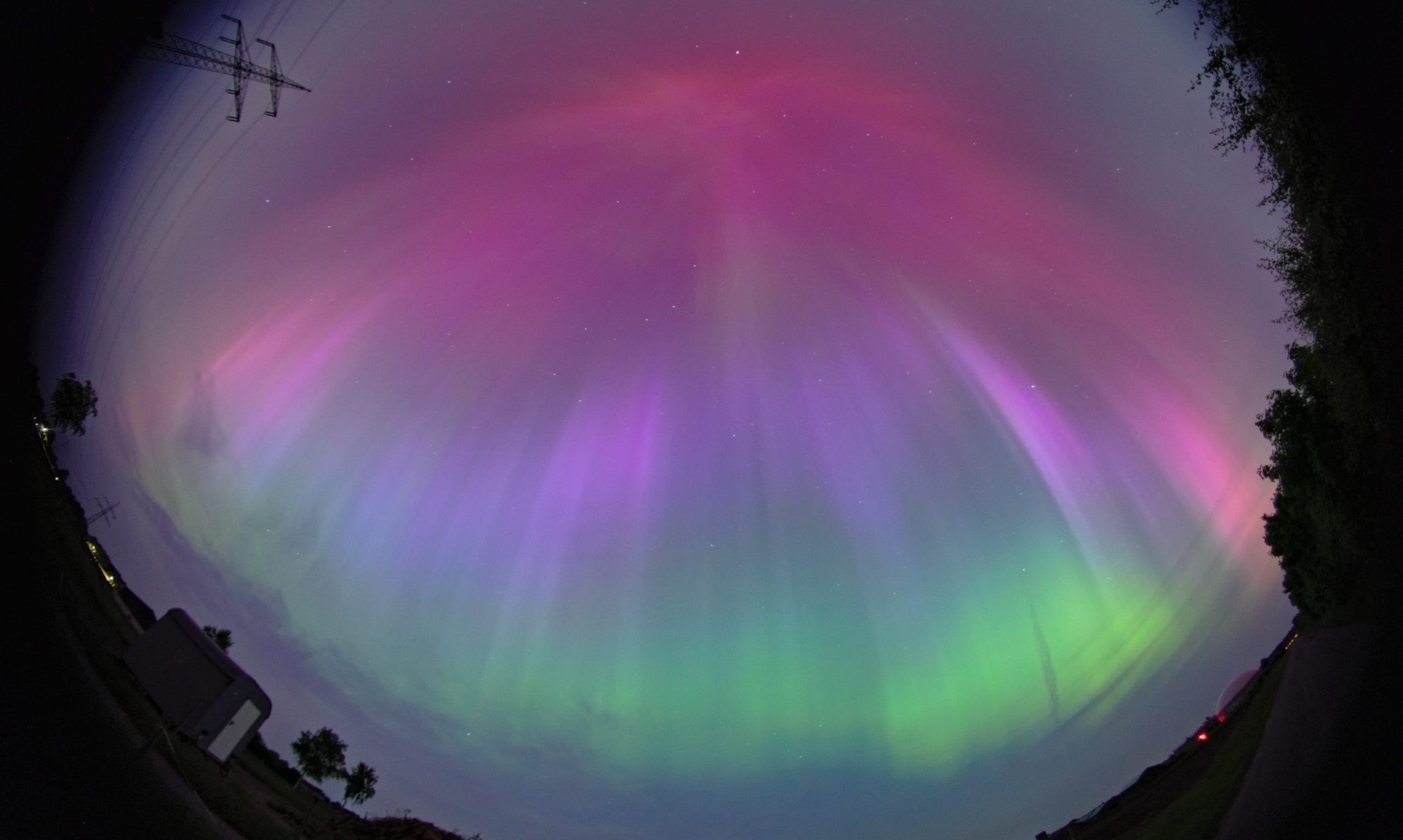As of May 4, another piece of information about the recently discovered radio pulsar a mere 3“ away from Sgr A* at the Galactic Centre has been published via the ATel #5043. The astronomers at the Max Planck Institute for Radio Astronomy (MPIfR) in Bonn, Germany, had another look at the source using the 100-meter Effelsberg telescope.
Better dispersion measure estimate
After their first observation–which also was the first firm detection of the radio pulsations–it was unclear what the dispersion measure (DM) of the source was. A previous ATel based on other MPIfR observations using the Effelsberg telescope gave a DM of 3900 +/- 1300 pc/cc. This time, the researchers observed the pulsar again at a central frequency of 8.35 GHz and were able to re-detect it. They further analysed their data in a slightly more sophisticated way get a better DM estimate. This time they find DM = 1300 ± 200 pc/cc.
Although this DM is lower, it is (2-sigma) consistent with the earlier estimate. It is also still consistent with the source being in the vicinity of Sgr A*, but it does not imply that. There are other pulsars with similar DMs with a much larger distance to the Galactic centre. We’ll just have to wait for more data to get even better estimates over time.
One possibility to improve the DM estimate is to observe at lower frequencies. There, the dispersive effect of the interstellar medium is larger, allowing a more precise determination of the DM value.
A successful detection at 4.85 GHz
Unfortunately, the pulsar might be too faint to be detected at lower frequencies. The new ATel #5043 also shows that this time the Effelsberg telescope could detect the pulsar at 4.85 GHz, which did not work in an identical observation about a week ago (as reported in ATel #5027). As pointed out by the new ATel, this shows that the source shows strong variability in the emitted radio flux. The detection at 4.85 GHz yields the a DM estimate consistent with the one at 8.35 GHz: 1000 ± 600 pc/cc. I’m not quite sure where the larger error comes from, but I suppose that it is due to the lower SNR compared to the detection at 8.35 GHz.

The now confirmed high DM could be the reason that the pulsar was not detected at lower radio frequencies. The large amount of free electrons in the interstellar medium lead to multi-path scattering of the radio emission and broadening of the narrow pulses, making the signal harder to detect.
Change in barycentric spin period
One interesting bit of information in the new ATel:
(…) We also note, small changes (larger than the measurement uncertainties) in the spin period between the NuStar detection and our observations, however further observations are required to constrain this further. (…)
Apparently the spin period changed slightly between the initial NuStar discovery and the further observations. The previous ATel #5040 had seen a
(…) spin period matching the NuSTAR discovery period (…)
So it might be that the pulsar is in fact in an orbit around something, which becomes now apparent with the longer observation baseline. I’ve collected all spin period measurements from NuStar and Effelsberg observations (unfortunately, there’s no precise period measurement from the Chandra observation). The results are as follows, listed by telescope, energy range, date (MJD) and spin period (in seconds, number in parentheses is 1-sigma error estimate):
Telescope (EM range) MJD period (s) --------------------------------------------- NuStar (X-ray) 56408.05 3.763542(8) Effelsberg (8.35 GHz) 56414.10 3.76354(1) Effelsberg (8.35 GHz) 56416.07 3.76343(2) Effelsberg (4.85 GHz) 56416.07 3.76343(2)
These numbers show in detail what the ATels reported/hinted at. The first Effelsberg measurement is consistent with the NuStar discovery, but the new measurements (two days later) show a smaller spin period. Such a strong spinup usually only happens when the pulsar is in an orbit around the common center of mass with a second object; the change in spin period comes from the change in orbital velocity via the changing Doppler effect.
The change in spin period appears to be large enough to be real, but before calling this final, I’d rather wait for another observation of the source, but I’m pretty sure that’s going to happen in one of the next nights, if not already tonight. If the spin period continues to vary, first estimates of the orbit are just a matter of time. After a few more observations one might be able to try some first orbital fits.
A second possibility is that the spin-up is the consequence of a pulsar glitch. Assuming that the first Effelsberg detection was before the glitch and the second one afterwards, I get a df/f of about 2.9e-5, which would be quite a strong glitch, but possible. Again, further observations are needed to constrain this.
I think, I can now repeat what I said at the end of my last post on this topic: Let’s see what the next few days will bring, in any case it’s going to be very interesting!
